|
Your search criteria found 3914 images Feature Name |
| My List |
Addition Date
|
Target | Mission | Instrument | Size |

|
1998-03-26 | Amalthea |
Galileo |
Solid-State Imaging |
856x270x1 |

|
|||||

|
1998-03-26 | Europa |
Galileo |
Solid-State Imaging |
1903x1864x1 |
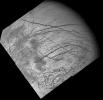
|
|||||

|
1998-03-26 | Ganymede |
Galileo |
Near Infrared Mapping Spectrometer |
1950x1500x3 |
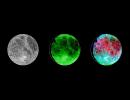
|
|||||

|
1998-03-26 | Europa |
Galileo |
Solid-State Imaging |
1540x1200x1 |
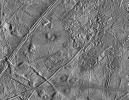
|
|||||

|
1998-03-26 | Europa |
Galileo |
Solid-State Imaging |
950x1200x1 |

|
|||||

|
1998-03-26 | Europa |
Galileo |
Solid-State Imaging |
1600x1280x1 |
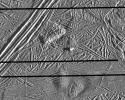
|
|||||

|
1998-03-26 | Europa |
Galileo |
Solid-State Imaging |
820x1275x1 |

|
|||||

|
1998-03-26 | Europa |
Galileo |
Near Infrared Mapping Spectrometer |
1326x863x3 |
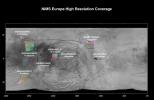
|
|||||

|
1998-03-26 | J Rings |
Galileo |
Solid-State Imaging |
1151x800x3 |
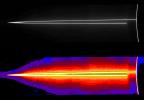
|
|||||

|
1998-03-26 | Jupiter |
Galileo |
Solid-State Imaging |
903x787x3 |
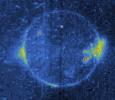
|
|||||

|
1998-03-26 | Io |
Galileo |
Solid-State Imaging |
1000x800x3 |
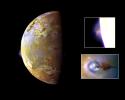
|
|||||

|
1998-03-26 | Ganymede |
Galileo |
Near Infrared Mapping Spectrometer |
445x525x1 |

|
|||||

|
1998-03-26 | Europa |
Galileo |
Solid-State Imaging |
1710x1320x1 |
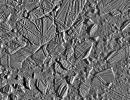
|
|||||

|
1998-03-26 | Io |
Galileo |
Near Infrared Mapping Spectrometer |
2200x1700x3 |
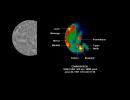
|
|||||

|
1998-03-26 | Callisto |
Galileo |
Solid-State Imaging |
1691x2231x1 |

|
|||||

|
1998-03-26 | Callisto |
Galileo |
Solid-State Imaging |
1450x700x1 |
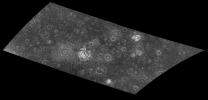
|
|||||

|
1998-03-26 | Europa |
Galileo |
Solid-State Imaging |
2000x1350x3 |
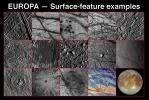
|
|||||

|
1998-03-26 | Io |
Galileo |
Solid-State Imaging |
1124x712x3 |
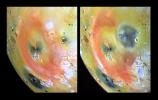
|
|||||

|
1998-03-26 | Io |
Galileo |
Solid-State Imaging |
1500x1000x3 |
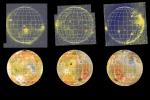
|
|||||

|
1998-03-26 | Europa |
Galileo |
Solid-State Imaging |
1000x800x1 |
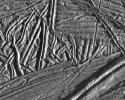
|
|||||

|
1998-03-28 | Pluto |
Hubble Space Telescope |
Faint Object Camera |
2573x1945x1 |
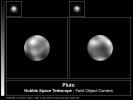
|
|||||

|
1998-03-28 | Pluto |
Hubble Space Telescope |
Faint Object Camera |
950x494x3 |
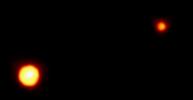
|
|||||

|
1998-04-02 | Ganymede |
Galileo |
Photopolarimeter-Radiometer |
432x540x3 |

|
|||||

|
1998-04-02 | Jupiter |
Galileo |
Photopolarimeter-Radiometer |
429x585x3 |

|
|||||

|
1998-05-02 | Jupiter |
Hubble Space Telescope |
WFPC2 |
1152x860x3 |
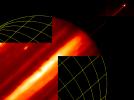
|
|||||

|
1998-05-02 | Jupiter |
Hubble Space Telescope |
WFPC2 |
720x900x3 |

|
|||||

|
1998-05-02 | Jupiter |
Hubble Space Telescope |
WFPC2 |
2069x2489x3 |

|
|||||

|
1998-05-02 | Jupiter |
Hubble Space Telescope |
WFPC2 |
720x600x1 |
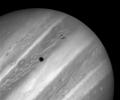
|
|||||

|
1998-05-02 | Jupiter |
Hubble Space Telescope |
WFPC2 |
800x600x3 |
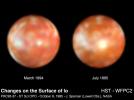
|
|||||

|
1998-05-02 | Jupiter |
Hubble Space Telescope |
WFPC2 |
600x700x3 |

|
|||||

|
1998-05-02 | Jupiter |
Hubble Space Telescope |
WFPC2 |
600x854x1 |

|
|||||

|
1998-05-02 | Jupiter |
Hubble Space Telescope |
WFPC2 |
800x600x3 |
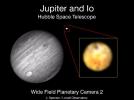
|
|||||

|
1998-05-08 | Europa |
Galileo |
Solid-State Imaging |
520x260x3 |
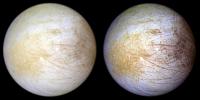
|
|||||

|
1998-05-08 | Callisto |
Galileo |
Solid-State Imaging |
930x550x3 |
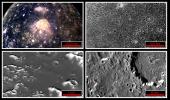
|
|||||

|
1998-05-08 | Callisto |
Galileo |
Solid-State Imaging |
749x344x3 |
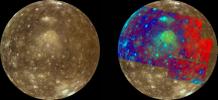
|
|||||

|
1998-05-08 | Io |
Galileo |
Solid-State Imaging |
1870x635x3 |
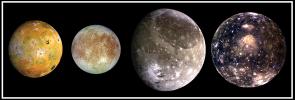
|
|||||

|
1998-05-08 | Io |
Galileo |
Solid-State Imaging |
1927x619x3 |

|
|||||

|
1998-05-08 | Europa |
Galileo |
Solid-State Imaging |
2605x3073x1 |

|
|||||

|
1998-05-21 | Europa |
Galileo |
Solid-State Imaging |
1042x643x3 |
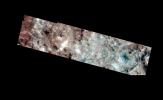
|
|||||

|
1998-05-21 | Europa |
Galileo |
Solid-State Imaging |
800x400x1 |
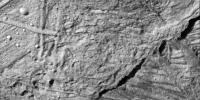
|
|||||

|
1998-05-21 | Europa |
Galileo |
Solid-State Imaging |
814x560x1 |
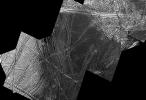
|
|||||

|
1998-05-21 | Europa |
Galileo |
Solid-State Imaging |
856x407x3 |
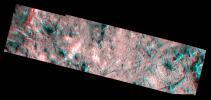
|
|||||

|
1998-05-21 | Europa |
Galileo |
Solid-State Imaging |
4000x2024x1 |
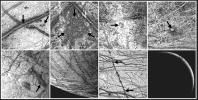
|
|||||

|
1998-05-21 | Europa |
Galileo |
Solid-State Imaging |
3500x2220x1 |
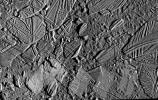
|
|||||

|
1998-06-03 | Moon |
DSPSE |
Ultraviolet/Visible Camera |
4316x4299x3 |
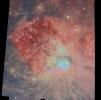
|
|||||

|
1998-06-03 | Moon |
Lunar Orbiter |
610 Millimeter Lunar Orbiter Camera |
2000x1100x1 |

|
|||||

|
1998-06-04 | Moon |
DSPSE |
Ultraviolet/Visible Camera |
1719x1719x1 |
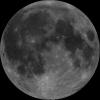
|
|||||

|
1998-06-04 | Moon |
DSPSE |
Ultraviolet/Visible Camera |
1719x1719x1 |

|
|||||

|
1998-06-04 | Moon |
DSPSE |
Ultraviolet/Visible Camera |
1719x1719x1 |
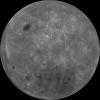
|
|||||

|
1998-06-04 | Moon |
DSPSE |
Ultraviolet/Visible Camera |
1719x1719x1 |
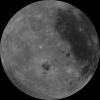
|
|||||

|
1998-06-04 | Triton |
Voyager |
4500x3500x3 | |
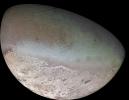
|
|||||

|
1998-06-04 | Io |
Voyager |
2572x1286x3 | |
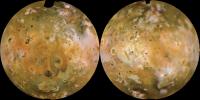
|
|||||

|
1998-06-04 | Io |
Voyager |
2625x1840x3 | |
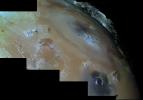
|
|||||

|
1998-06-04 | Ganymede |
Voyager |
VG ISS - Wide Angle |
1024x520x3 |
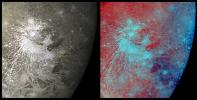
|
|||||

|
1998-06-04 | Triton |
Voyager |
3000x3000x3 | |
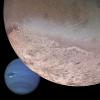
|
|||||

|
1998-06-04 | Earth |
Galileo |
Solid-State Imaging |
1700x2164x3 |

|
|||||

|
1998-06-04 | Enceladus |
Voyager |
VG ISS - Narrow Angle |
1004x1004x3 |
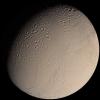
|
|||||

|
1998-06-04 | Iapetus |
Voyager |
VG ISS - Narrow Angle |
325x350x3 |

|
|||||

|
1998-06-04 | Saturn |
Voyager |
860x1230x3 | |

|
|||||

|
1998-06-08 | Saturn |
Voyager |
860x1230x3 | |

|
|||||

|
1998-06-08 | Moon |
Galileo |
3053x3053x3 | |
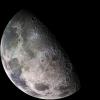
|
|||||

|
1998-06-08 | Moon |
Galileo |
1986x1986x3 | |
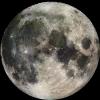
|
|||||

|
1998-06-10 | Jupiter |
Galileo |
Solid-State Imaging |
900x900x3 |
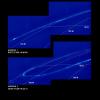
|
|||||

|
1998-06-10 | Jupiter |
Galileo |
Solid-State Imaging |
900x950x3 |

|
|||||

|
1998-06-10 | Jupiter |
Galileo |
Solid-State Imaging |
900x950x3 |

|
|||||

|
1998-06-10 | Jupiter |
Galileo |
Solid-State Imaging |
900x900x3 |
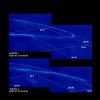
|
|||||

|
1998-06-15 | Mars |
Mars Global Surveyor (MGS) |
Mars Orbiter Camera (MOC) |
800x800x1 |
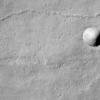
|
|||||

|
1998-07-02 | Io |
Galileo |
Solid-State Imaging |
581x900x3 |

|
|||||

|
1998-07-02 | Io |
Galileo |
800x800x1 | |
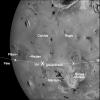
|
|||||

|
1998-07-15 | Ganymede |
Galileo |
Solid-State Imaging |
392x398x1 |

|
|||||

|
1998-07-15 | Ganymede |
Galileo |
Solid-State Imaging |
707x1049x1 |

|
|||||

|
1998-07-15 | Ganymede |
Galileo |
Solid-State Imaging |
813x753x1 |
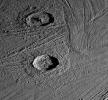
|
|||||

|
1998-07-15 | Ganymede |
Galileo |
Solid-State Imaging |
392x398x1 |

|
|||||

|
1998-07-15 | Ganymede |
Galileo |
Solid-State Imaging |
692x480x3 |
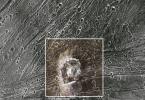
|
|||||

|
1998-07-15 | Ganymede |
Galileo |
Solid-State Imaging |
615x519x1 |
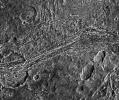
|
|||||

|
1998-07-15 | Ganymede |
Galileo |
Solid-State Imaging |
800x798x1 |
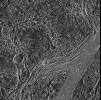
|
|||||

|
1998-07-15 | Ganymede |
Galileo |
Solid-State Imaging |
531x361x1 |
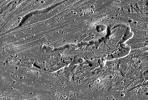
|
|||||

|
1998-07-15 | Ganymede |
Galileo |
Solid-State Imaging |
949x559x1 |
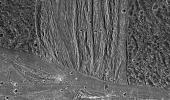
|
|||||

|
1998-07-15 | Ganymede |
Galileo |
Solid-State Imaging |
506x360x1 |
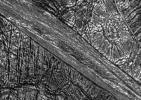
|
|||||

|
1998-07-15 | Ganymede |
Galileo |
Solid-State Imaging |
797x798x1 |
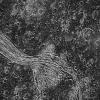
|
|||||

|
1998-07-15 | Ganymede |
Galileo |
Solid-State Imaging |
706x551x1 |
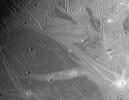
|
|||||

|
1998-07-15 | Ganymede |
Galileo |
Solid-State Imaging |
782x784x1 |
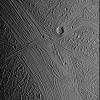
|
|||||

|
1998-07-15 | Ganymede |
Galileo |
Solid-State Imaging |
900x600x1 |
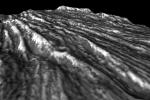
|
|||||

|
1998-07-15 | Ganymede |
Galileo |
Solid-State Imaging |
790x1413x1 |

|
|||||

|
1998-08-02 | Saturn |
Hubble Space Telescope |
WFPC2 |
630x900x3 |

|
|||||

|
1998-08-02 | Saturn |
Hubble Space Telescope |
WFPC2 |
1133x900x3 |
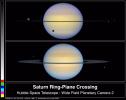
|
|||||

|
1998-08-02 | Saturn |
Hubble Space Telescope |
WFPC2 |
892x459x1 |
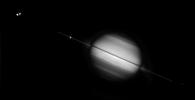
|
|||||

|
1998-08-02 | Saturn |
Hubble Space Telescope |
WFPC2 |
550x850x1 |

|
|||||

|
1998-08-02 | Saturn |
Hubble Space Telescope |
WFPC2 |
600x750x1 |

|
|||||

|
1998-08-02 | Saturn |
Hubble Space Telescope |
WFPC2 |
600x800x1 |

|
|||||

|
1998-08-02 | Saturn |
Hubble Space Telescope |
WFPC2 |
600x800x1 |

|
|||||

|
1998-08-02 | Uranus |
Hubble Space Telescope |
WFPC2 |
490x512x1 |

|
|||||

|
1998-08-02 | Uranus |
Hubble Space Telescope |
WFPC2 |
600x800x1 |

|
|||||

|
1998-08-28 | Saturn |
Voyager |
VG ISS - Narrow Angle |
1000x1000x3 |
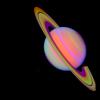
|
|||||

|
1998-09-15 | J Rings |
Galileo |
Solid-State Imaging |
1078x636x1 |
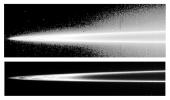
|
|||||

|
1998-09-15 | J Rings |
Galileo |
Solid-State Imaging |
2016x1529x3 |
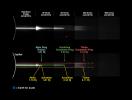
|
|||||

|
1998-09-15 | Amalthea |
Galileo |
Solid-State Imaging |
1539x1066x1 |
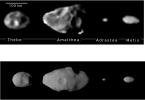
|
|||||

|
1998-09-15 | J Rings |
Galileo |
Solid-State Imaging |
2560x1920x3 |
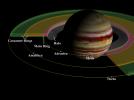
|
|||||

|
1998-09-15 | J Rings |
Galileo |
Solid-State Imaging |
1800x2700x3 |

|
|||||

|
1998-09-26 | Titan |
Hubble Space Telescope |
WFPC2 |
600x750x3 |

|
|||||

|
 |
 |
 |
 |
 |
 |
 |
 |
 |
 |

|
| 1-100 | 101-200 | 201-300 | 301-400 | 401-500 | 501-600 | 601-700 | 701-800 | 801-900 | 901-1000 |
| Currently displaying images: 201 - 300 of 3914 |